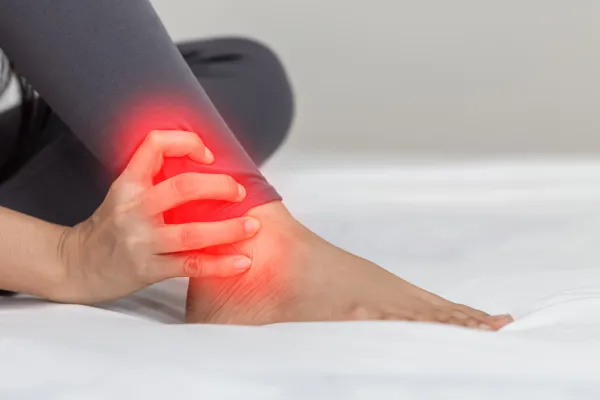Get Dx Right, and Then Take Aim at CTS Shot Coding

You might need a CTS diagnosis for 20526. But then again, .... Reporting therapeutic injections for patients with the "carpal tunnel" CPT® injection code can cause understandable confusion. Why? The code in question - 20526 (Injection, therapeutic [eg, local anesthetic, corticosteroid], carpal tunnel) - includes the words "carpal tunnel" in the descriptor. There are some payers, however, that don't expressly require a carpal tunnel syndrome (CTS) diagnosis for 20526, so the diagnosis coding might not automatically lead you to 20526. Also, most payers require proof of more conservative treatment attempts before you report 20526 - regardless of diagnosis code. And reporting bilateral 20526 shots is another can of coding worms. If you haven't mastered 20526 coding, don't worry. We've got experts to guide you through those tough 20526 coding questions, so you arrive at the right coding decision each time. CTS Dx (Might Be) a Must to Report 20526 For most Medicare (and non-Medicare) providers, the patient must have a CTS diagnosis when you report 20526. If your payer contract expressly states that 20526 is for CTS patients only, this simplifies your coding considerably. Example: Medicare Administrative Contractor (MAC) Novitas only covers the following ICD-10 codes for 20526, reports Cathy Satkus, CPC, coder at Harvard Family Physicians in Tulsa, Oklahoma: Translation: If the patient doesn't have a CTS diagnosis, Novitas won't cover 20526. While this is a general coding rule, it does not necessarily apply to every payer. "The main diagnosis to use for 20526 would usually be G56.00 to G56.03," says Dreama Sloan-Kelly, MD, CCS, president of Dr. Sloan-Kelly Consulting in Shirley, Massachusetts. "However, I encourage all clients to refer to their local Medicare carrier's LCDs [local coverage determinations]. It is a great resource for ICD-10 diagnosis codes that support medical necessity." For example, Sloan-Kelly points out Noridian's LCD, which doesn't flat-out forbid you from reporting 20526 with a non-CTS diagnosis. In fact, the LCD lists dozens of diagnosis codes that might support medical necessity for the following CPT® codes: This does not mean that you can report 20526 for any of the ICD-10 codes listed in Noridian's coverage determination; it does, however, mean that the payer has not explicitly forbidden 20526 reporting with a non-CTS diagnosis. Another instance in which a payer might cover 20526 is when CTS is mild or moderate, reports Catherine Forman, DC, CPC, COSC, CMC, of University Orthopaedic Associates URMC in Rochester, New York. According to local coverage determination (LCD) L33622, "Injection of a carpal tunnel may be indicated for the patient with mild to moderate symptoms when pharmaceutical and other conservative measures have failed or are not otherwise indicated." "The first sign of nerve compression is sensory in nature, so mild forms of CTS can be described as hypoesthesia, paresthesia, or dysesthesia," Forman explains. "In these cases, some providers will perform a diagnostic injection of the carpal tunnel. It is appropriate under these circumstances to bill 20526 with a diagnosis from the signs and symptoms chapter, like R20.2 [Paresthesia of skin]," she says. Best bet: If you're going to file a 20526 claim with a diagnosis other than CTS, tread softly: Check your payer contract, contact a payer rep, and get approval from your supervisor to file this claim. You don't wantpayers' ears to perk up on these claims; the biggestred flag for 20526 claims is often a lack of a CTS diagnosis. To check out Noridian's LCD on these injections, go to: https://med.noridianmedicare.com/documents/10546/6990981/Injections+-+Tendon, Ligament, Ganglion+Cyst, Tunnel+Syndromes+and+Morton's+Neuroma+LCD/fae75e02-cbbd-4630-a012-e37dd6360472. Make Plain Conservative Tx Efforts on 20526 Claims In order to properly report 20526, you need recorded evidence of failed previous attempts to alleviate the CTS, confirms Sloan-Kelly. Make sure the patient's medical record reflects these attempts. "Essentially, clinical documentation must show that more conservative treatments, such as NSAIDS [nonsteroidal anti-inflammatory drugs], have failed or are contraindicated," she explains. "I always encourage all providers to give an explanation for why it failed - so for instance, in regard to NSAID they should document the patient had very little to no pain relief and describe the pain on a scale of 1 to 10 as always. "If the provider is stating more conservative [CTS] treatments were contraindicated, they again must state why," Sloan-Kelly continues. Some forms of prior treatment that might allow for 20526 payment include: Remember, this is not an exhaustive list. There are other forms of CT treatment the provider might employ before opting for 20526. No matter the treatment, be sure to note it in the documentation for your CT patient. Remember to Report Drug Supply When you are reporting 20526, remember to include a drug supply code, Forman reminds. "All providers should bill for the drug supply separately - paying close attention to the dosage to make sure they are coding the correct units," explains Sloan-Kelly. "The most common injectable used for 20526 is J1030 [Injection, methylprednisolone acetate, 40 mg]." Code Bilateral CTS Release by Payer Preference When your provider has to perform bilateral 20526 service, coding can get confusing. Just how to report the shots depends on the payer, according to Satkus. Check out this list of the most common ways to report bilateral CTS release: Best bet: You'll definitely want to make sure you know how your payer wants you to report bilateral 20526 claims before you file the claim. As evidenced above, there are a lot of permutations to this coding combination. Although modifier 50 might be the most logical choice for your bilateral 20526 claims, "check with the payer, as some [payers] have their own special practices," according to Forman. She cites Aetna, which requires you to report 20526 bilaterally as:




